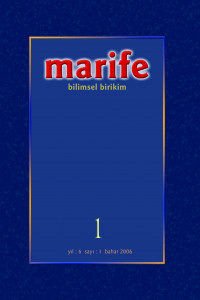Abstract
Ta'reez and kinaya are the kinds of indirect speech and frequently used by people in daiy if e The aim of this study is to expose in what areas of f iqh ta'reez and kinaya are used, how this usage affects the decision of that matter and to present examples of usage as much as possfcle to reflect the related culture The areas of f iqh that ta'reez is used prominently are proposal of marriage to a woman in waiting period (iddah), slander of adultery/fornication, discourage from confession of a crime or bearing witness in hadd crimes and speaking to a Muslim about non-Musim enemy. Kinaya is also used in very different areas of fiqh such as divorce, slander of adultery/fornication, foundation, guardianship etc. It draws attention that kinaye usage is mainly dscussed in fiqh resources under the topic of dvorce related subjects (talaq, hut*, la, zhtiar etc.). Fuqaha have attempted to determine a measure to distinguish kinaye wads from sareeh (expidt) ones to ensure the prindple of objectivity and stabity in law. We see that being mentioned in Quran or hadeeth texts, features of the spoken language and common usage/tradtion in a society are accepted as measures by some fuqaha. It is dear that depending on the changes in tradtion and language in time, a word's attribute as kinaye or sareeh should also be revised necessarly.
Abstract
...............................................................
Details
| Primary Language | Turkish |
|---|---|
| Subjects | Religion, Society and Culture Studies |
| Other ID | JA93ZD76ZD |
| Journal Section | Research Article |
| Authors | |
| Publication Date | May 31, 2006 |
| Published in Issue | Year 2006Volume: 6 Issue: 1 |
This work is licensed under a Creative Commons Attribution-NonCommercial 4.0 International License.


